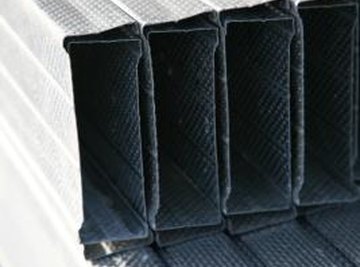
Plastic parts can be coated with a thin layer of metal for aesthetic, conduction, and static reduction purposes. Coating plastic parts with metal is difficult, because traditional metal coating methods rely on high temperatures or electrical conductivity, neither of which will work for plastic parts. Some methods for applying a metal coating on plastic use some of the same principles as those used to coat metal parts, but with some differences to take into account the material properties of the plastic base part.
Electroless Plating
Electroless plating is a process that uses a chemical reaction to transfer metal ions to a work piece. The process is similar in some ways to electroplating, but no current is required. Because electrical current is not used, the work piece does not have to be conductive, and plastic can be coated in metal using this method. The work piece is immersed in an aqueous solution bath where several chemical reactions take place. The chemical reactions cause a negative charge to be induced on the work piece, which attract metal ions from the solution.
Nickel is the most common metal coating used in the electroless plating process, and a catalyst has to be applied to the plastic work piece before plating to improve the attraction of ions. Electroless plating is a very consistent coating method, providing even coating, even in corners and crevasses in the base part.
Vapor Deposition
Vapor deposition is a type of vacuum deposition that involves applying a coating of material onto a base part by depositing individual atoms or molecules onto the part while the part is within a vacuum. This process can create extremely thin film coatings on a variety of base part materials regardless of the material properties, so plastics can be used as a base material.
Physical vapor deposition uses a solid or liquid as the vapor source. There are a variety of physical vapor deposition methods, including evaporative deposition, sputtering, pulsed laser deposition, and cathodic arc deposition.
Conductive Paint
Conductive paint is a paint that contains conductive metal materials, which allows the coating itself to be electrically conductive. This is not a true metal coating, but is less expensive and easier to perform than most other metal coating methods, and is applicable for some applications. In this case, the coating is not meant to be aesthetic, just functionally conductive. Conductive paint is often made from silver or platinum.
About the Author
Susan Kristoff has been writing engineering content for 13 years. Her articles have appeared on eHow.com, Suite101, her personal websites, and the websites of many ghostwriting clients. Kristoff's expertise includes design, structures, sensors, data acquisition, and fabrication.
Photo Credits
Jupiterimages/Photos.com/Getty Images
